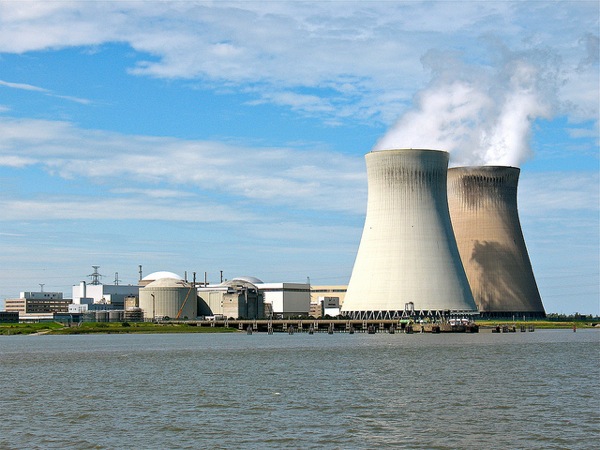Activists See U.S. Nuclear Industry Starting to Crumble

ATLANTA, Georgia, Jun 27 (IPS) - With the announced closures of four nuclear reactors in the United States so far this year and the cancellation of proposed facilities elsewhere in the country, some activists believe the U.S. nuclear industry is beginning to crumble.
Earlier this month, Southern California Edison (SCE) announced it would close the troubled San Onofre Plant, which has two reactors and is located on the beaches of San Diego, California.
The reactors were shut down in 2012 when they were discovered to be leaking larger than normal amounts of radioactive pollution.
SCE's announcement came after a local television news station in April 2013 published photographs and testimony showing that SCE had been using tape, plastic bags and a broomstick to fix a leaky pipe at the San Onofre Plant.
SCE had asked the U.S. Nuclear Regulatory Commission (NRC) to reopen the reactors, but the company ultimately announced their decision to retire them.
In May, the utility company Dominion closed the one small nuclear reactor at the Kewaunee Plant in Carlton, Wisconsin, not because of known problems with the plant but because the company decided it was not economical to keep it open.
And Duke Energy announced in February that it would close the Crystal River 3 Nuclear Plant, located in Crystal River, Florida, which has one small reactor.
According to Glenn Carroll, coordinator of Nuclear Watch South, a grassroots organisation that raises awareness about nuclear issues, the four closures bring the total number of nuclear reactors in the United States down to an even hundred, from 104 at the beginning of the year and 114 at the industry's peak.3
"There haven't been any new reactors built in over 30 years. A small number of them are under construction, and none of them are going well," Carroll told IPS. "They're expensive...and meanwhile, solar and wind are…garnering small wins every day."
" is crumbling under its own weight," Carroll said.
A gradual deterioration
Just a few years ago, dozens of proposals for possible new nuclear reactors existed. Today, two nuclear projects in Georgia and South Carolina are the only ones still going forward, Carroll noted.
"If there are four reactors being built instead of 44, your economy of scale has just evaporated," Carroll pointed out, adding that Georgia would be "strapping itself" to rising costs for parts for the plant.
"They're going to be essentially hand-crafted. No company is going to be set up to create these parts," she said.
Carroll predicted that other reactors would soon be slated for closure, including those at Vermont Yankee in Vernon, Vermont and at Indian Point in Buchanan, New York. In both cases, state governments have sought to shut down the plants.
Meanwhile, billionaire investor Warren Buffett has completely divested from the nuclear industry. Earlier this month, one company owned by Buffett, MidAmerican Energy, has abandoned a proposal to open a new nuclear facility in Iowa.
The costs of nuclear power
According to Mark Cooper, a senior research fellow for economic analysis at the Institute for Energy and the Environment at Vermont Law School, history has proved that nuclear power is not economical.
"The industry likes to say once you build them, they just hum along and they're cash cows, producing low cost electricity, and then the industry takes that claim and uses that as a pillar they try to build the case for new nuclear reactors," Cooper told IPS.
The nuclear industry maintains that once construction is complete, plants are inexpensive to operate and "last forever", according to Cooper.
"The reality of old reactors does not support those claims," he argued, and "the construction costs for new nuclear reactors go through the roof."
He said one-fifth of reactors built before 2013 that received commercial licenses have retired early and called the 60-year life span of reactors "inconsistent with reality".
"When age, they have the tendency of being more and more costly to keep online," he added. "When they break, they are too expensive to fix," he said, citing over two dozen reactors that have closed down for those reasons.
Subsidised construction
In his speech on global warming earlier this week, U.S. President Barack Obama pointed to nuclear reactors under construction in Georgia and South Carolina as examples of new clean energy supported by his administration.
As reported by IPS in 2008, Obama has long been supportive of - and received campaign contributions from - the nuclear industry, beginning with his term in the U.S. Senate.
However, through charges applied to their monthly energy bills, taxpayers in Georgia and South Carolina are shelling out in advance to heavily subsidise nuclear projects in those states, even as Georgia Power and Scana are guaranteed profits because of decisions made by their legislatures and public service commissions.
"At the great pain imposed on ratepayers in Georgia and South Carolina, they can finish those reactors," Cooper said, but "those reactors will tell us nothing about building another one because they are so incredibly subsidised."
He believed that other states would not adopt such an approach that shifts risk to taxpayers, predicting, "Summer in South Carolina and Vogtle in Georgia will be monuments for folly, not launch points for the future."
© Inter Press Service (2013) — All Rights ReservedOriginal source: Inter Press Service
 Global Issues
Global Issues